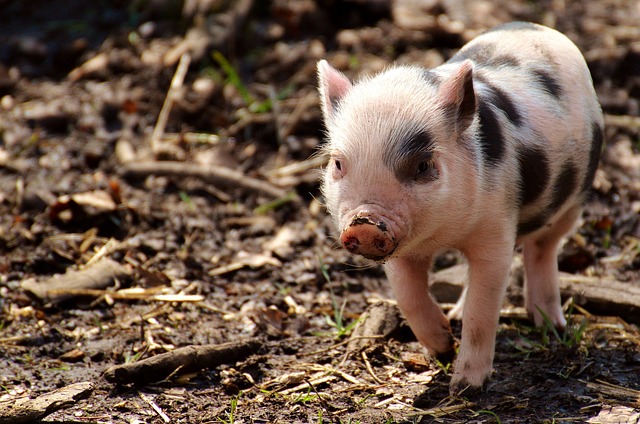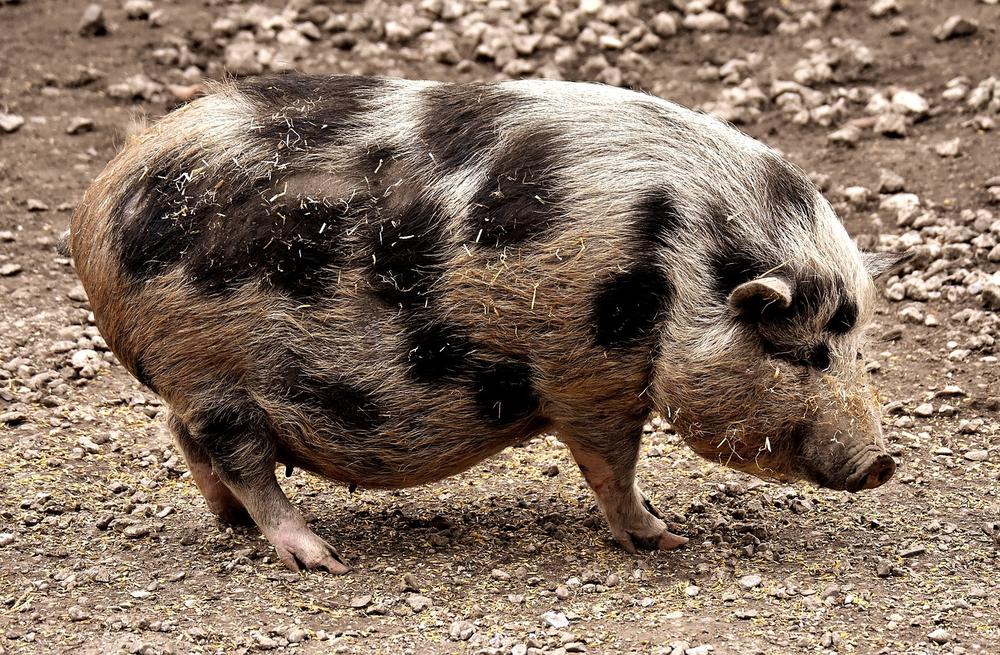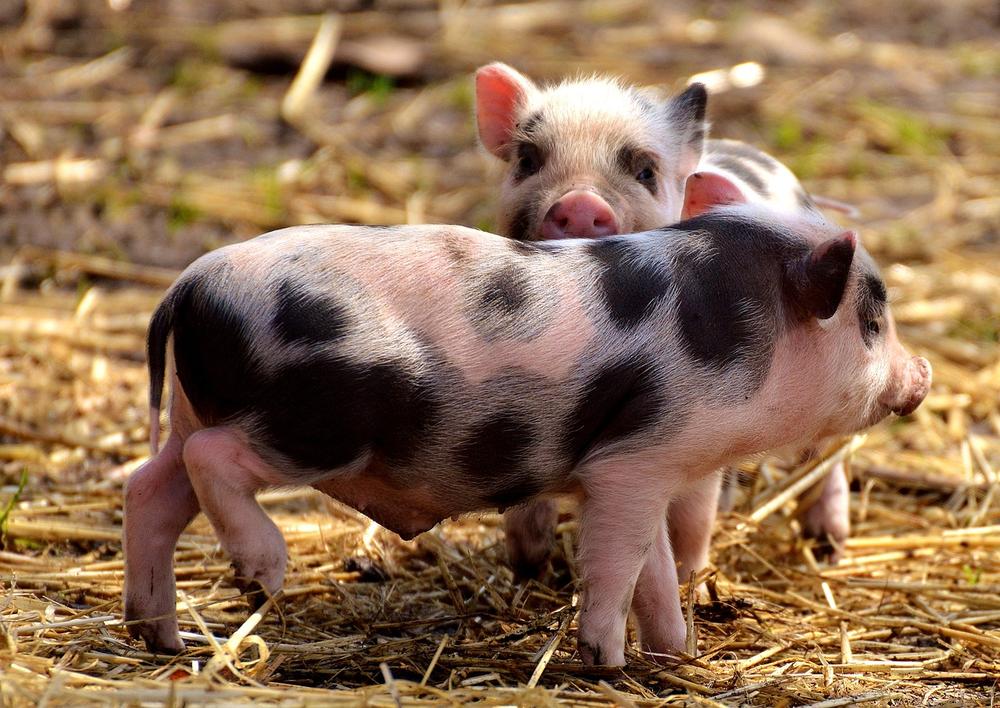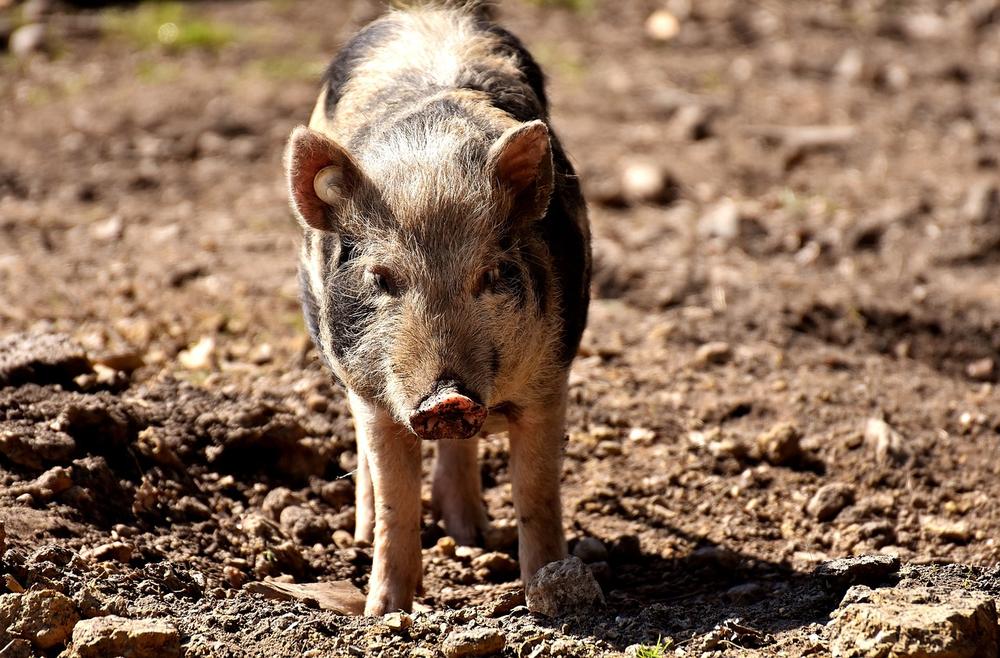How to Care for a Pet Pig (Like a Pro): All You Need to Know

Got a piggy in your life?
Well, guess what?
If you don't take care of that cute little oinker, things can go downhill fast. 😱
Picture this:
A hot mess of stress, headaches, and endless piggy problems.
But hold your hogs, because in this Pig Enthusiast guide, I'll rescue you from the piggy madness.
Let's begin!
What Should Pet Pigs Eat?
A Balanced and Nutritious Diet for Pet Pigs
If you’re thinking of bringing pet pigs into your home and making them part of your family, you should think about their health and well-being.
And one crucial aspect of caring for them is their diet.
It is crucial for you to make sure pet pigs are given a diet that supplies all the essential nutrients they need for their health.
Commercial Food and Fresh Produce
To start with, you should give your pet pig high-quality pig food that is low in protein, low in fat, and high in fiber.
This will give them the essential nutrients they need to thrive.
But don't stop there.
It's also recommended to supplement their diet with plenty of fresh fruits and vegetables. Cucumbers, lettuce, carrots, apples, and grapes are great choices that will add variety to their meals.
However, it’s key to note that you shouldn't feed pet pigs meat scraps or human food containing meat. This can potentially expose them to parasites and lead to future health problems.
Feed Quantity and Growth Stages
Make sure you watch out for overfeeding!
Just like us humans, pet pigs need to keep an eye on their weight too.
You'll want to limit the amount of food you give them to prevent them from becoming overweight.

Table scraps, especially those containing meat, should be avoided.
And did you know that different growth stages require different types of feed?
There are four main stages of pig growth: Starter, grower, finisher, and breeding.
Each stage has specific dietary requirements to support their growth and development.
For example, Chinese pigs have 18 teats and higher fat content compared to American pigs.
They ideally reach market weight within 205-208 days, gaining an average of 1.5+ pounds per day.
Feeding them pellets or coarsely ground feed is preferable for better weight gain and reduced risk of stomach ulcers.
So, make sure you keep your pet pig's diet well-balanced, nutritious, and appropriate for their specific growth stage.
If you're interested in learning more about the necessary care and requirements for owning a pet pig, I highly recommend checking out my article on Pet Pig Care Necessities.
Whether it's ensuring a balanced and nutritious diet or understanding the different growth stages, my guide has got you covered.
Don't miss out on the valuable insights and tips that will help you provide the best care for your beloved pet.
How to Create a Comfortable Sleeping Area for Your Pet Pig
To make sure your pet pig has a cozy place to snooze, keep these tips in mind:
- Go for washable bedding like blankets or pillows. That way, you can easily keep everything nice and clean.
- Keep your furry friend's brain engaged with toys that stimulate their senses. Food puzzles or treat-filled pet balls can do the trick.
- Create a rooting box with stones, hay, and yummy snacks. Pigs absolutely love to explore and root around, so this activity will keep them entertained.
- Tear up some paper and scatter it around the sleeping area. Not only will pigs have something to play with, but it also provides enrichment and keeps them occupied.
- For house pigs, think about using a cat litter box. With a little training, they can learn to use it - making cleanup a breeze for both of you.
With these ideas, you'll ensure your pet pig has a comfy and exciting sleeping spot they'll enjoy every day. 😊
By following these tips, you can create a comfortable sleeping area for your pet pig.
But if you want to learn everything you need to know about caring for a göttingen mini pig, I highly recommend checking out Gottingen Mini Pig Complete Guide.
The Importance of Social Interaction for Micro Pigs
Micro pigs are social creatures that thrive on interaction and companionship.
Leaving them alone for extended periods can result in separation anxiety which no one wants.

To keep your micro pig happy and mentally stimulated, regular social interaction is key.🤝
Here are some tips to ensure your pig gets the attention it needs:
- Spend quality time together - Whether it's playing, petting, or simply cuddling, ensure you set aside dedicated time each day to bond with your pig.
- Create a pig-friendly environment - Provide plenty of toys, puzzles, and enrichment activities to keep your pig engaged and entertained.
- Arrange playdates - Introduce your pig to other compatible animals for socialization and playtime. This could be other pigs, dogs, or even cats!
- Take your pig for outings - Micro pigs enjoy exploring new environments. Take them for walks or visit pet-friendly places where they can interact with people and other animals.
- Train your pig - Teaching your pig tricks and commands not only stimulates their mind but also enhances the bond between both of you.
Regular interaction is vital for a happy and well-adjusted pig.
Don't deprive these intelligent creatures of the social connection they thrive on!
And when it comes to introducing your micro pig to other animals, I can't emphasize enough the importance of taking things slow and being vigilant...
Introducing Micro Pigs to Dogs or Cats: Establishing Compatibility and Boundaries
Introducing micro pigs to your dogs or cats is all about compatibility and setting boundaries.
Here's what you can do:
- Start the introduction in a neutral space where no one feels territorial.
- Keep those initial meetings short and ensure you're there to watch them.
- Increase their interaction time slowly, over multiple sessions.
- Pay close attention to how they act and behave around each other.
- Show them that you're the one in charge and set clear rules for everyone.
- Stay cool and confident when introducing them - it sets the right vibe.
- If things get aggressive, separate them right away to avoid any harm.
- Reward good behavior with delicious treats and lots of praise.
- Think about using baby gates or crates to give each animal their own space.
- Create a special "piggy box" filled with shavings or straw for your pig to burrow in.
Finding common ground between micro pigs and other pets takes time and patience.

Just keep an eye on them and step in if needed.
By taking a gradual, supervised approach, you can pave the way for a harmonious coexistence.
And it gets better...
Now, let's explore the essential elements of creating a safe and comfortable outdoor space for your pet pig:
Ensuring a Safe and Stimulating Outdoor Environment for Your Micro Pig
Building or purchasing a sturdy outdoor enclosure is crucial for your pig's safety and well-being.
Here are some tips on how to ensure a safe and stimulating outdoor environment for your micro pig:
- Provide ample space for exercise, taking into account the pig's size and age.
- Make sure the enclosure offers protection from predators and extreme weather conditions.
- Consider using a dog door to train your pig for outdoor elimination.
- Allow your pig some time outside every day to satisfy their natural instinct to root.
- Be aware of local zoning laws that may have restrictions on pet pigs and outdoor structures.
- Bear in mind that raising pigs indoors in an environmentally controlled area is considered ideal for commercial purposes.
- However, if they are raised on concrete, it may reduce parasite exposure but increase the risk of arthritis.
- During hot weather, provide additional space and shade for your pig to avoid overheating.
Creating a safe and stimulating outdoor environment will contribute to the in essence happiness and health of your micro pig.
And now let's move indoors to ensure your micro pig's safety and comfort within the confines of your home...
Can Micro Pigs Climb Stairs?
Here are 10 important considerations when it comes to micro pigs and stairs:
- Assess your pig's physical abilities before allowing them on stairs.
- Size is a key factor in determining if your pig can safely navigate stairs.
- Joint issues or respiratory problems can also impact a pig's ability to climb stairs.
- Training your pig in obedience and tricks can help build trust and improve coordination.
- Teach your pig to use a litter pan for easy cleanup.
- Use paper, newspaper, or chips as litter material in the pan.
- Baby gates or playpens can limit your pig's access to stairs.
- Ensure that pig-friendly entryways are available for comfortable movement.
- Consider providing alternative pathways or ramps instead of stairs.
- Prioritize your pig's safety and comfort when deciding whether or not they should have access to stairs.
Knowing your pig's capabilities and creating a safe environment are key aspects of responsible pet ownership!
And now that you know how to properly care for your pet pig at home, let's explore what you need to consider if you plan on traveling with your furry friend!
Plan ahead and research specific airline or transportation regulations regarding traveling with pet pigs.
Show them affection and take them for walks to keep them active and healthy.
Furthermore, consider any quarantine requirements if you plan to cross the Canadian border with your piggy companion...
Travelling With Your Pet Pig?
Research specific airline or transportation regulations before traveling with your pig.
You must plan ahead for a smooth journey.
Affection is key for keeping your pig active and healthy. Take them for walks, showering them with attention along the way.
If you intend to cross the Canadian border with your piggy companion, be mindful of quarantine requirements.
Don't forget to consider any necessary precautions.
By staying informed and showing your pet affection, you’ll ensure a safe and enjoyable travel adventure together.
How Do I Prevent My Pet Pig From Getting Sick?
To keep your pet pig healthy and happy, here's what you should do:
- Before and after handling your pig, wash your hands.
- Don't let your pig get too hot - ensure there's enough ventilation and shade.
- To prevent dehydration, regularly give them small sips of water.
- Keep those water tanks grounded properly, so your pig doesn't get electrocuted.
- Keep cords out of reach to avoid any chewing accidents.
- Vaccinations should start when they're about 4-6 weeks old, and don't forget the boosters.
- Protect them against SMEDI group viruses - these sneaky ones can cause abortions.
- Make sure the parasite treatments match their housing conditions and history.
- Teach your piggy not to chew on anything dangerous like cords or hazardous items.
- Prevent reproductive problems by spaying or neutering your pig.
- Don't forget to vaccinate them against rabies and other common diseases.
- Be smart about breed selection and be careful with their reproduction.
- If you're gonna breed gilts, look for ones with 12 evenly spaced nipples when they're 7-8 months old.
- For boars, the optimal time to breed them is around 8 months old - keeps them in good shape and fertility.
- And lastly, before you go ahead and spay or neuter, better check the local bylaws first.
Stick to these steps, and your piggie will stay healthy and cozy as can be! 😉
Key Concerns in Pet Pig Care
Summary Key Takeaways:
- Provide fresh water at all times to prevent salt toxicity and seizures.
- Feed a low protein, low fat, high fiber diet with pig pellets and fresh produce.
- Avoid feeding pigs human food scraps containing meat to prevent parasites.
- Use toys and mental stimulation to keep pigs entertained.
- Provide a separate room or crate for confinement and a comfortable sleeping area.
- Regularly interact with pigs to prevent moodiness and disruptions.
- Establish boundaries and be the pack leader when introducing pigs to other animals.
- Give pigs access to outdoor space and a pen with shade and protection.
- Train pigs to use a dog door for elimination and allow them time to root outside.
- Check local zoning laws before adopting a pig as they may have restrictions.
- Train pigs to use litter pans and use baby gates or playpens to control their movement indoors.
- Show affection and take pigs for walks to keep them active and healthy.
- Prevent heat stroke and manage water supply and cords to avoid accidents.
- Vaccinate pigs for local diseases starting at 4-6 weeks of age.
- Tailor parasite treatments and prevent pigs from chewing cords.
And that's all for today folks.
Thanks for making it to the end of my blog post! I'd love to hear your thoughts -- did you enjoy it? I work hard to create informative and thorough blog posts, so it means a lot to me that you took the time to read it. Writing these posts takes quite a bit of effort (but in a positive way!) and consumes a significant amount of my time. That is why I would be extremely grateful if you could simply click on any of the social sharing icons to share this blog post with others. Your support means the world to me. Thank you!
Until next time,
-Chris Campbell